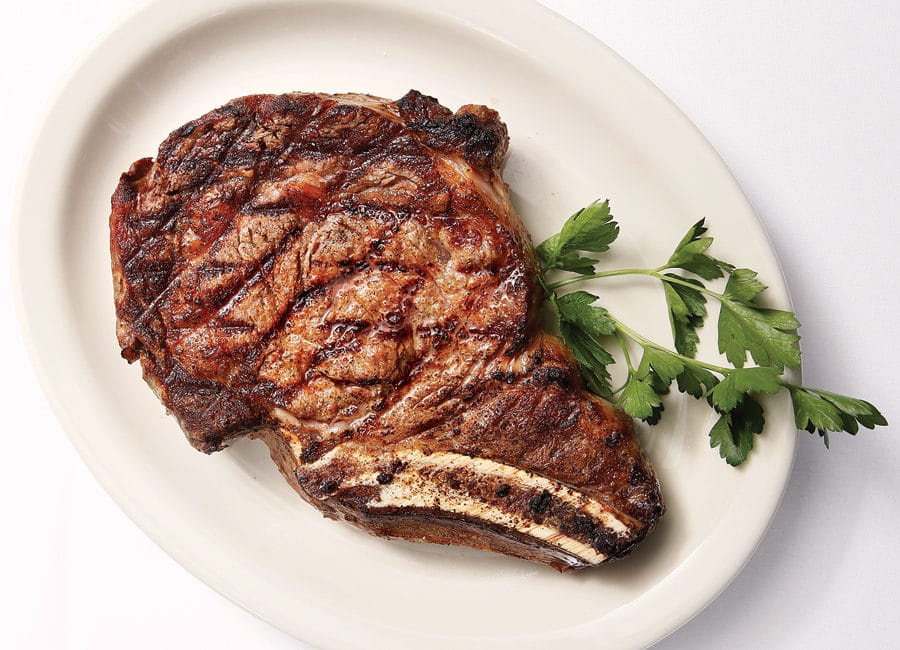
Steaks of a Certain Age
Allowing a steak to sit for a couple of weeks—killing time in a controlled state of decomposition before it is cooked—breaks down the toughening collagen in the meat. What remains is the more-flavorful and tender protein. Steaks come of age in one of two ways:
Dry-aged
With this meat-locker method, butchers hang beef in a cool, 40-degree room for a time to allow the bacteria to break down the flesh naturally. The steak loses water weight and gains a more intense flavor sometimes described as “funky” or “gamey”—in a good way. Most high-end steakhouses will include a dry-aged steak or two on the menu or feature dry-aged specials well worth the extra dollars. “Seasonally, we get a few steaks in that are dry-aged,” says Jake Burgess, chef at Prime 47. “A dry-aged Kansas City strip has been our staple forever.” Some specialized dry-aging rooms use salt blocks to keep the moisture down and the bacteria under control.
Wet-aged
This method of tenderizing beef emerged as a more efficient process for the industry. The carcass is carved up and placed in vacuum-sealed bags with a nitrogen-gas flush. The nitrogen suspends the bacteria breakdown, allowing for meat to be stored for longer periods of time. Sometimes meat that arrives at the steakhouse wet-aged is finished with an in-house dry aging.
We love steak, any way you slice it. In Indianapolis, there’s a steakhouse to cater to every occasion and level of sophistication, and after months of dining like wealthy cavemen, we present them to you here, in juicy detail. A la cartes include a primer on the king cuts (for those who don’t know a porterhouse from a portobello), tips on the best cheap chops in town, a cattle call of beefy terms, and a stab at defining that common condition among steak-lovers—the meat sweats. You want a piece of this? Dig in.





